The obsession with sperm originated with the question: How do mermaids become pregnant—a question that is never addressed in the literature about mermaids, despite the fact that they do appear to bear young, as illustrated by the story of The Little Mermaid.
The artist’s answer to the question based on brainstorming with various individuals: Mermaids become pregnant by swimming through a swarm of sperm.
The sperm then simply had to be produced.
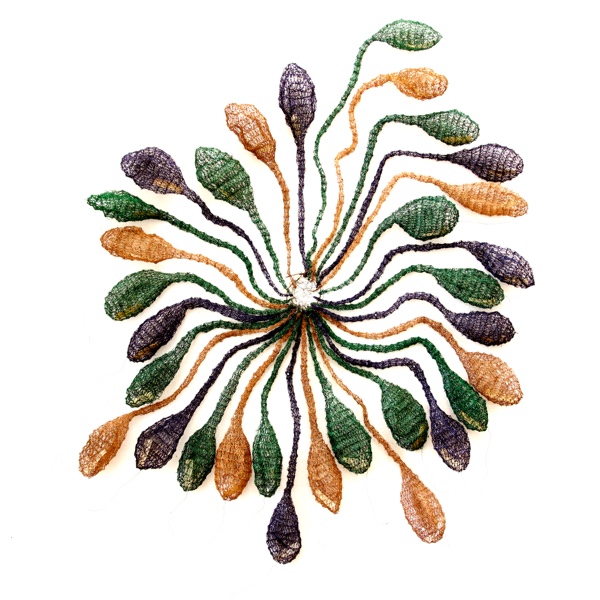 |
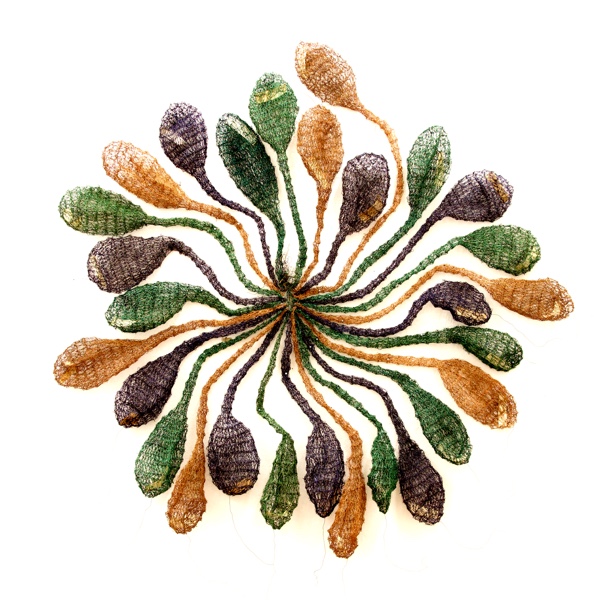 |
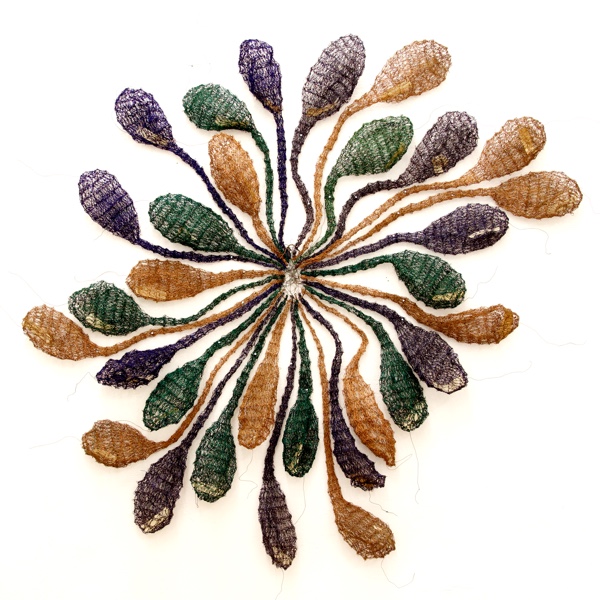 |
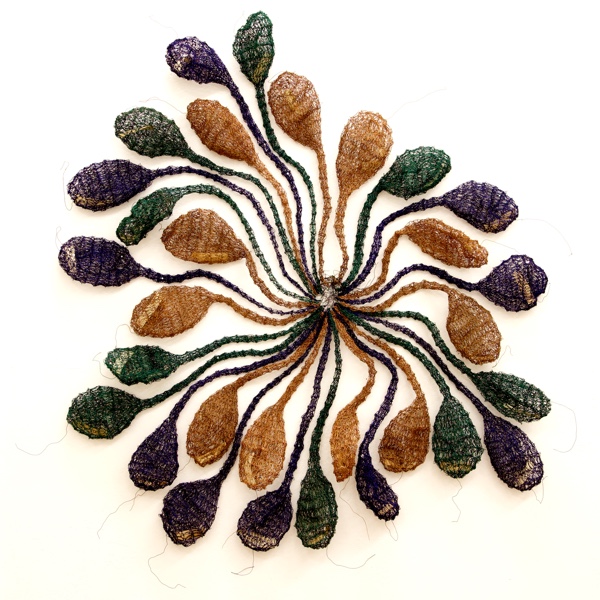 |
 |
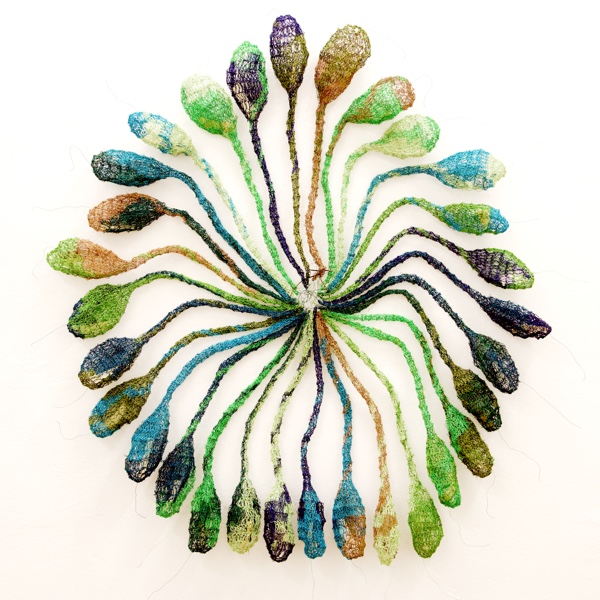 |
 |
 |
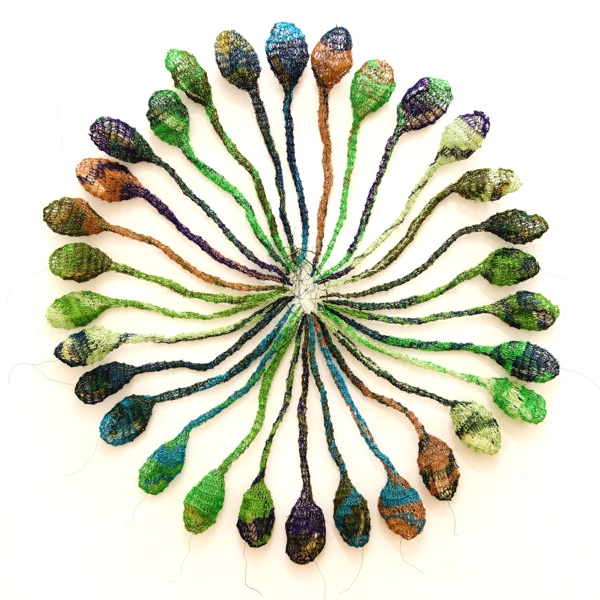 |
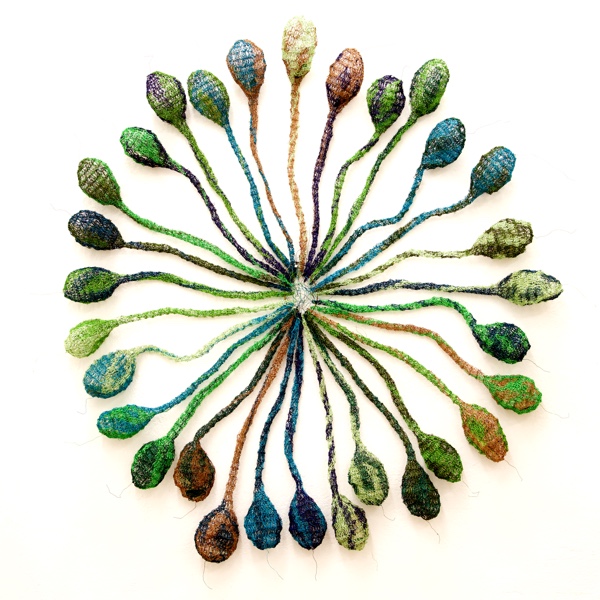 |
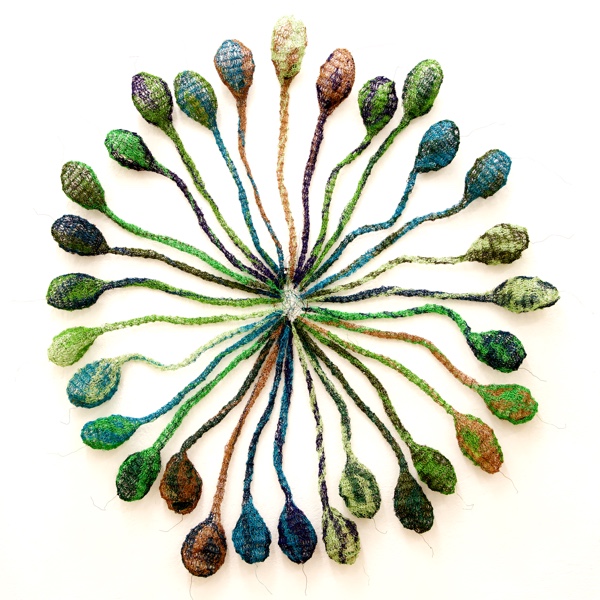 |
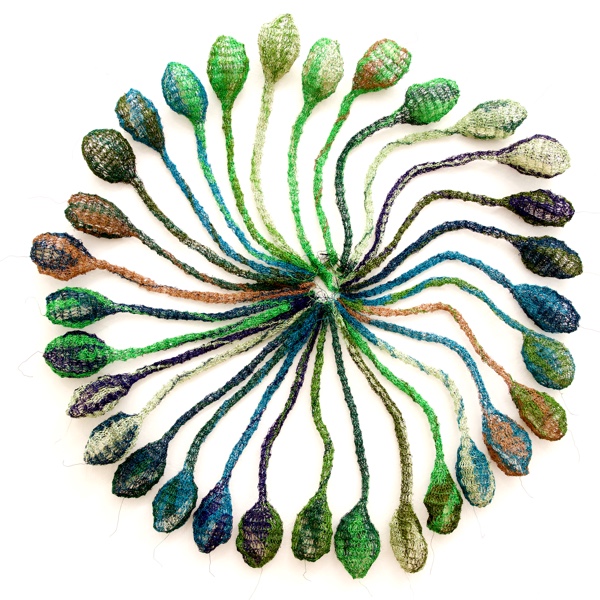 |
The first sperm were produced using prime numbers, then odd numbers as the basis for the crochet pattern. These initial attempts at producing sperm subsequently resulted in the first sperm performances, based on the question: How many sperm can a woman produce—in 24 hours? Thirteen was the answer, but all of the sperm displayed various defects that also occur in the case of real sperm, but due as well to the faulty, still unrefined crochet pattern used in making them.
Over time, trial, and error, it became clear that the Fibonacci numbers, which also influence the natural growth patterns of, for instance, plants, were the answer.
The 365 sperm pictured above month by month were produced over the course of one entire year under the motto: A Sperm a Day. They were mostly produced in public—cafés, public transport, parties, parks, et cetera—and show how the pattern used to produce them became more and more refined over time.